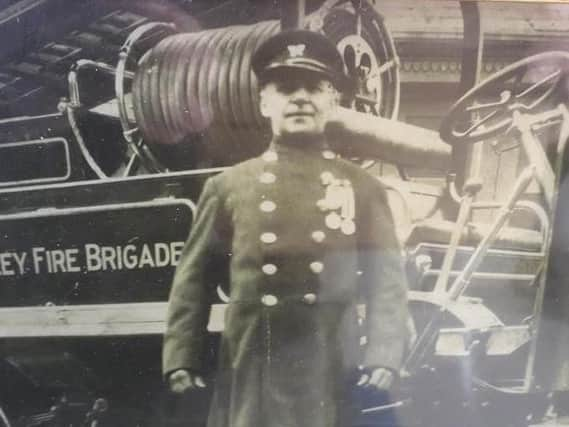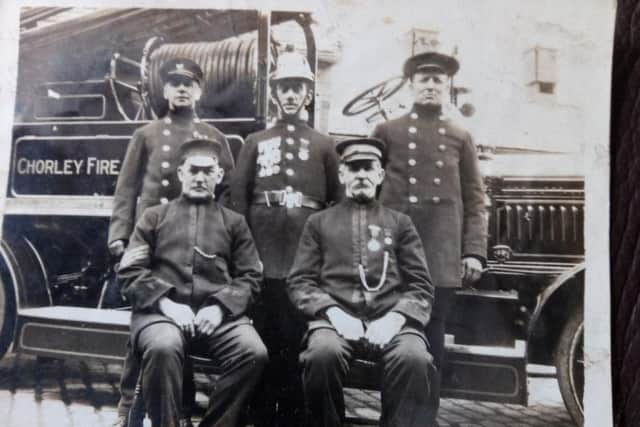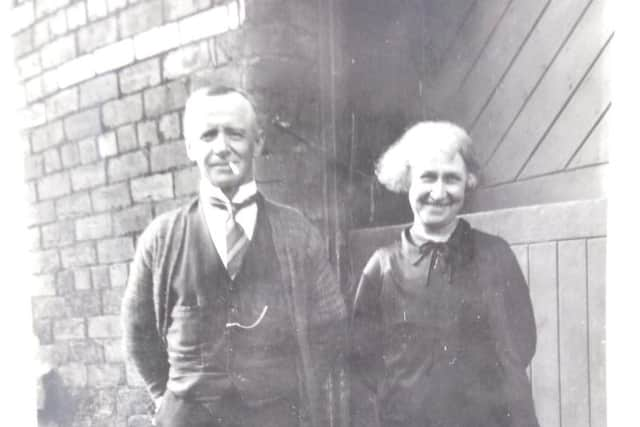The proud moment a Chorley man drove the first petrol-drawn fire engine in the borough


Chorley resident John Smith was given the huge honour of being the first man to drive the petrol-drawn fire engine in the borough’s fire brigade.His great grandson, Bob Smith, 71, has several newspaper articles and photos showing his time in the fire service in the early 1900s.
Bob says: “John was born in Aylesbury and as a youngster, he looked after horses.“As he grew up, he was a carter driver and he moved to Chorley.“At first, he worked as a Hackney Carriage driver, based at the back stables behind where the Royal Oak pub used to be.“He later joined the fire service and was the only full time employee, apart from the officer.“He worked at the old fire station where Asda is now.
Advertisement
Hide AdAdvertisement
Hide Ad“The horses were kept in stables at the back and it was his job to look after them and make sure the fire engines kept in order and ready to go.“He kept the fire set inside the steam pump engine.


“If there was a fire, he would put the harnesses on the horses as they dropped down.“He would then connect the engines up and the firemen would light the fire for the engine.“The action of the carriage engine being pulled would become fire for the steam pump.“It was a very busy job.
“Also, if there was an accident in the pit and there were casualties, he would take the horse drawn ambulance and pick people up.“He had to unhook the horses from the fire engines already on the scene, get them back to the station and pick the ambulance carriage up, harnessing the horses up again.
“The fire station also shared purpose as a council yard and abattoir.“Two horses were used for the fire engine and the rest were used for bin collection via the council.
Advertisement
Hide AdAdvertisement
Hide Ad“When the petrol-drawn engines arrived, he was the first to drive it.”John lived in the station house in Pall Mall, and his son, Arnold, helped out, waking the firemen up.Bob adds: “When the fire bells went, my grandad, Arnold, would knock the firemen up because they lived locally.“If the firemen went out in the engines they got a tally, which was a disc that they put on the fire engine.“If they got a tally, the fireman would usually give Arnold a penny.“If they didn’t give him a penny, he would knock them up last at the next fire bell.”


Bob also recalls hearing about the death of a fireman after a wall collapsed.He says: “There was only ever one fireman killed in Chorley, Mr Blackledge.“He was killed at North Street Mill, where B&Q is now, when a wall collapsed.“It was very sad. He was a lodger at my great grandfather’s house, so he knew him well.”
Bob adds he is proud of his great grandfather and his work.He says: “He died in 1945, before I was born, so I never knew him. He was aged 66 when he died. He had two children and three grandchildren. He worked very hard and got a medal for 21 years of long service.”